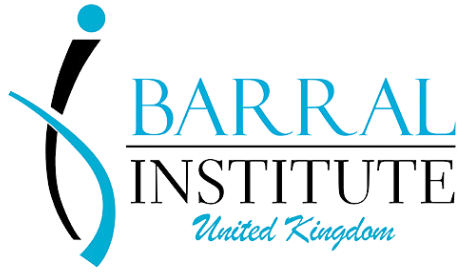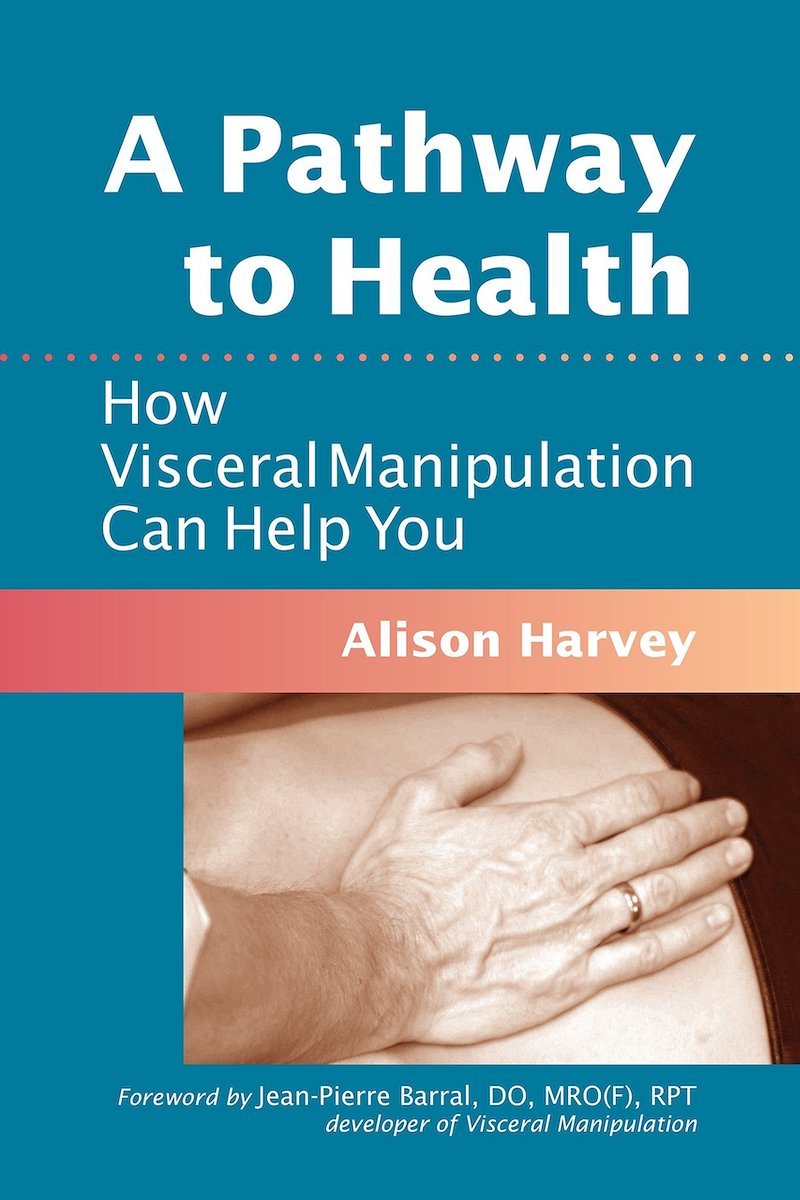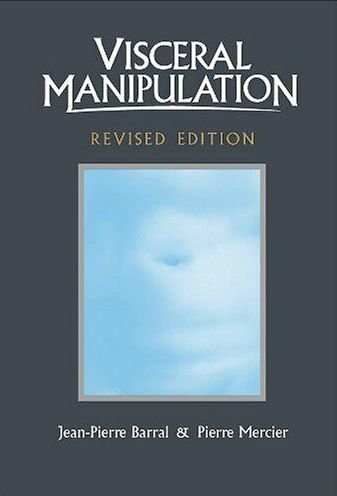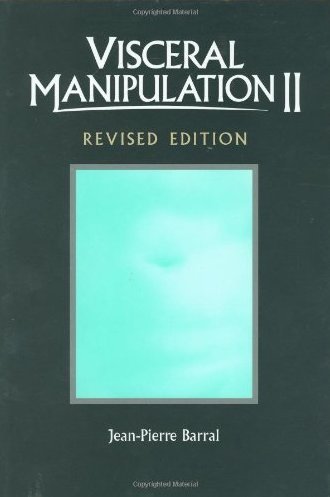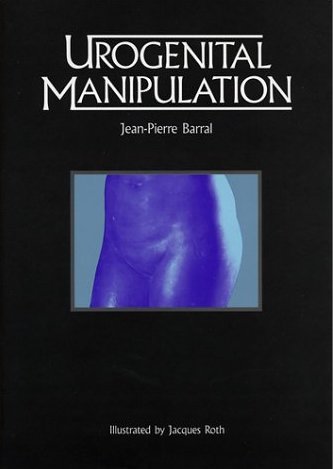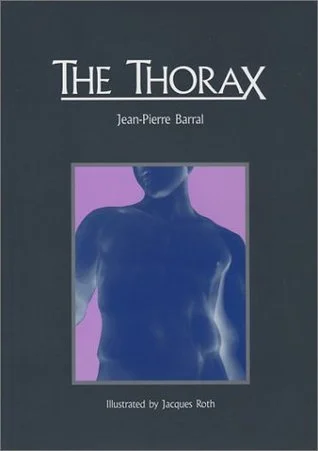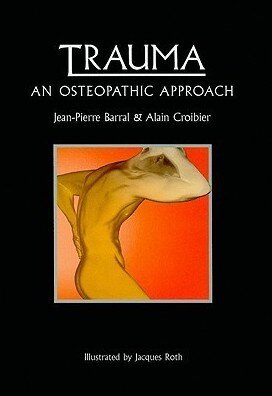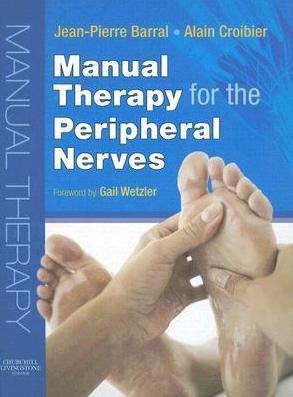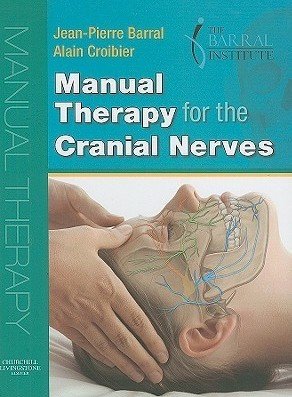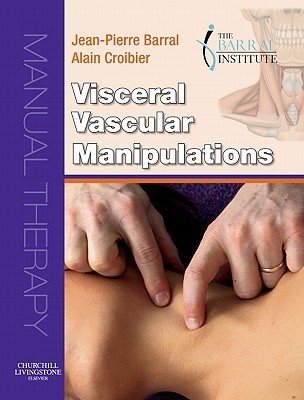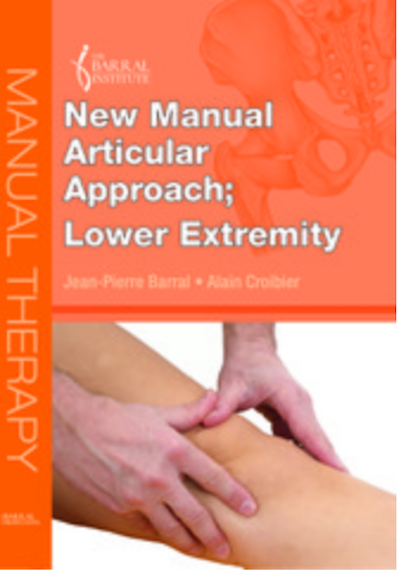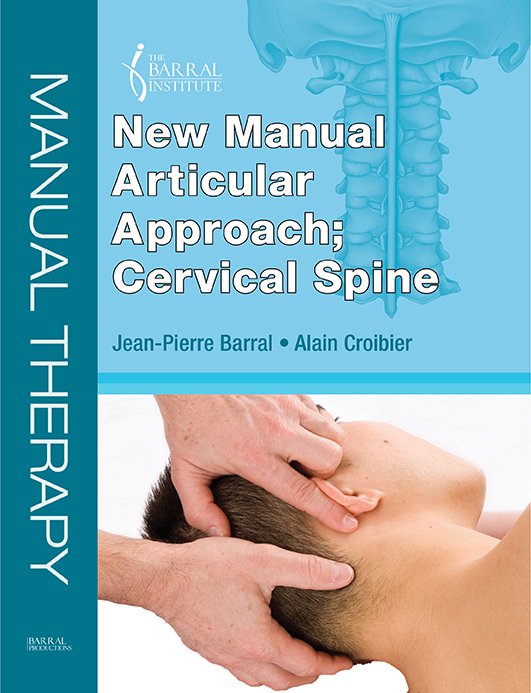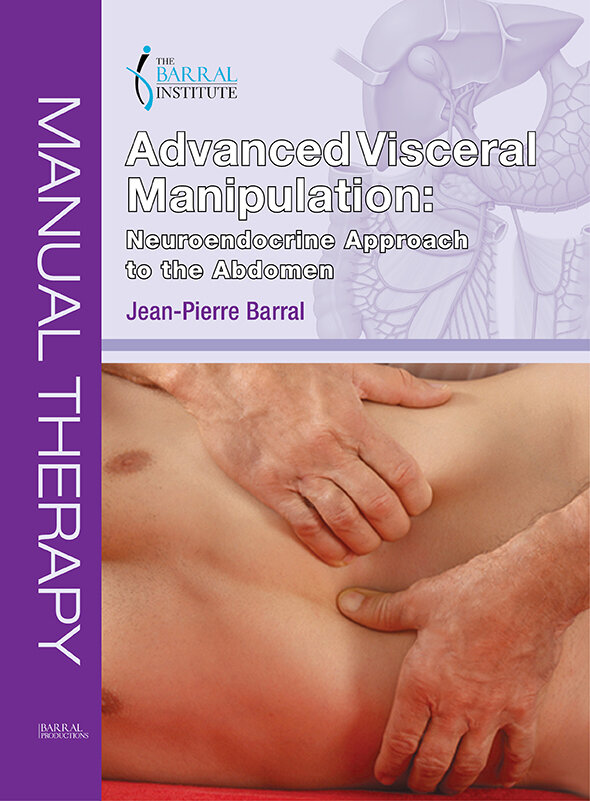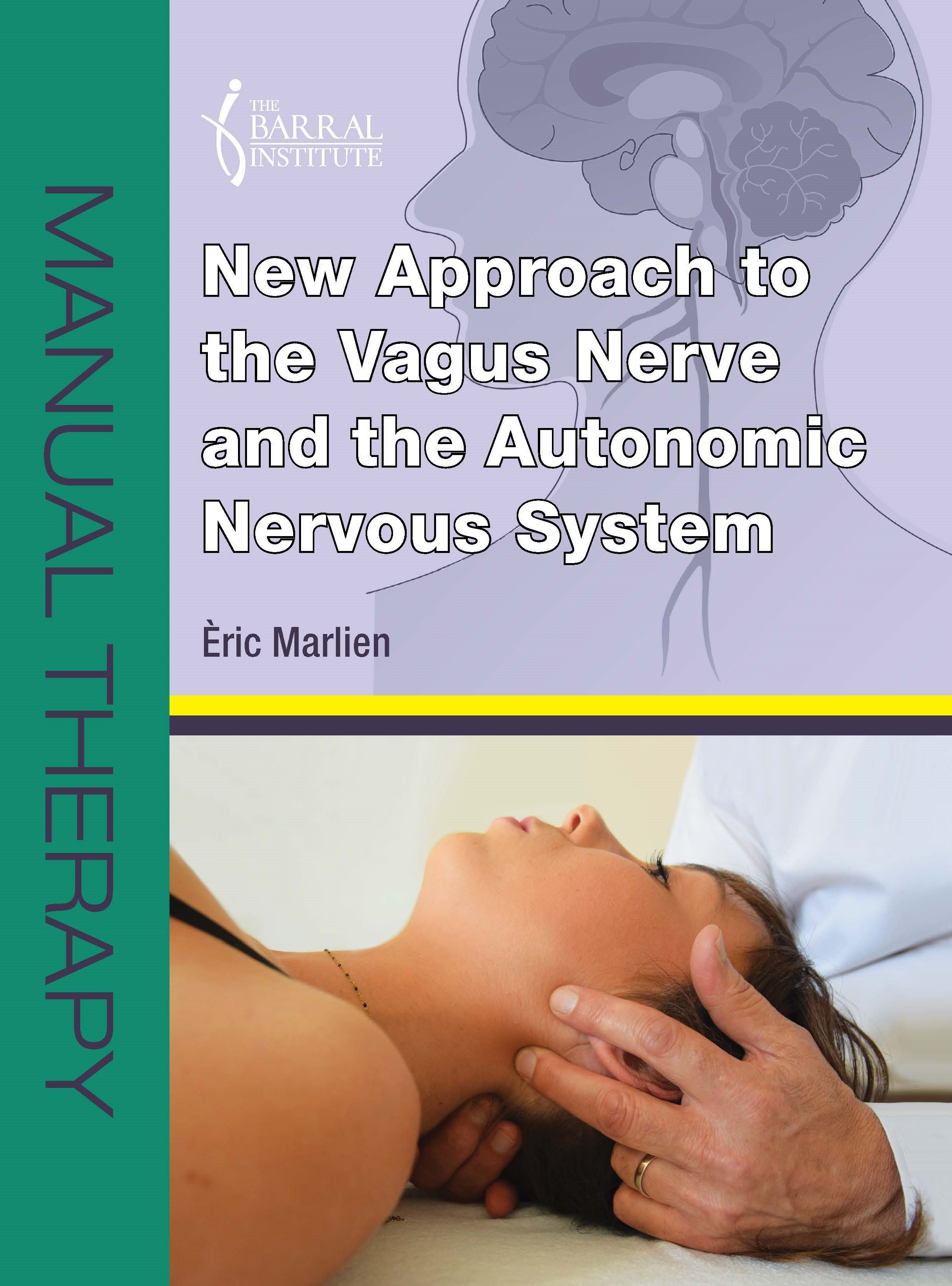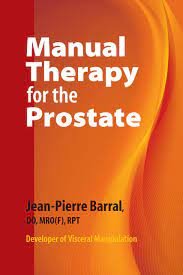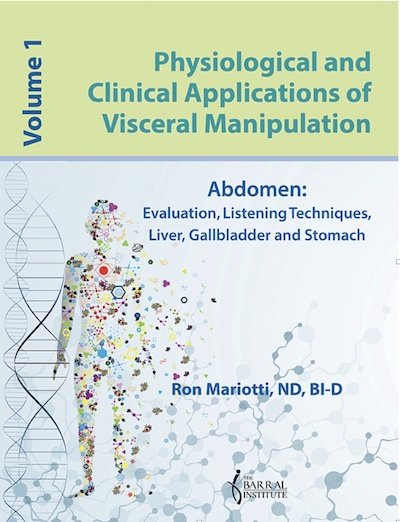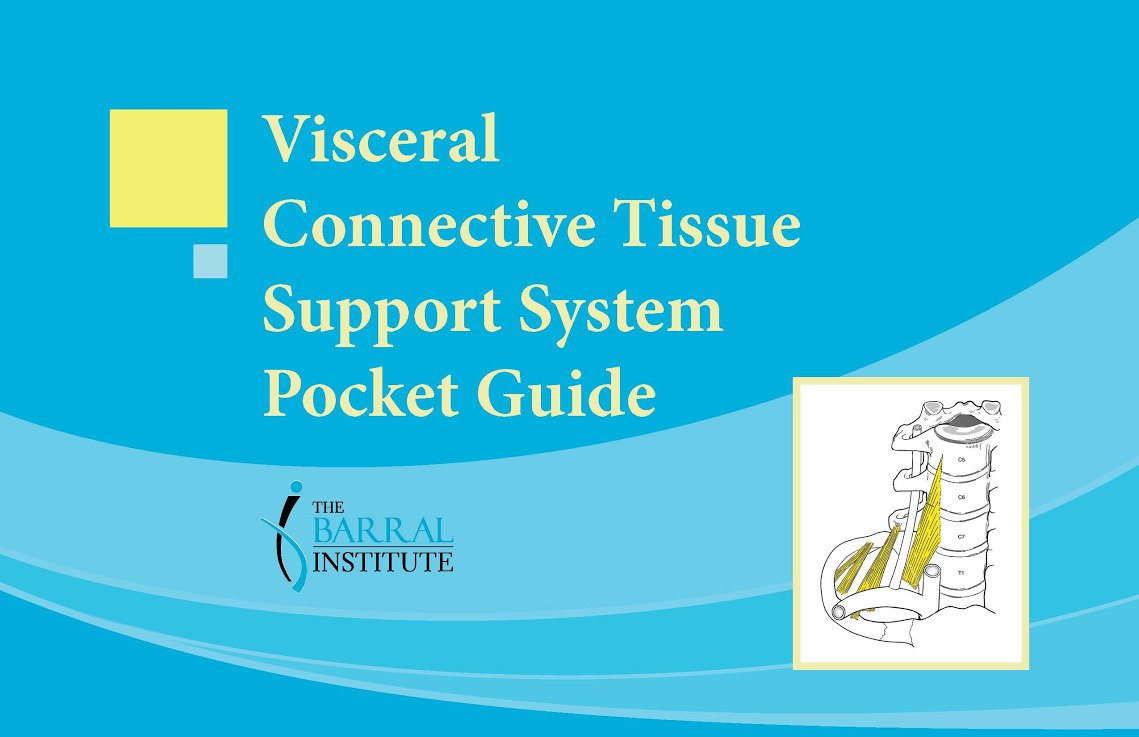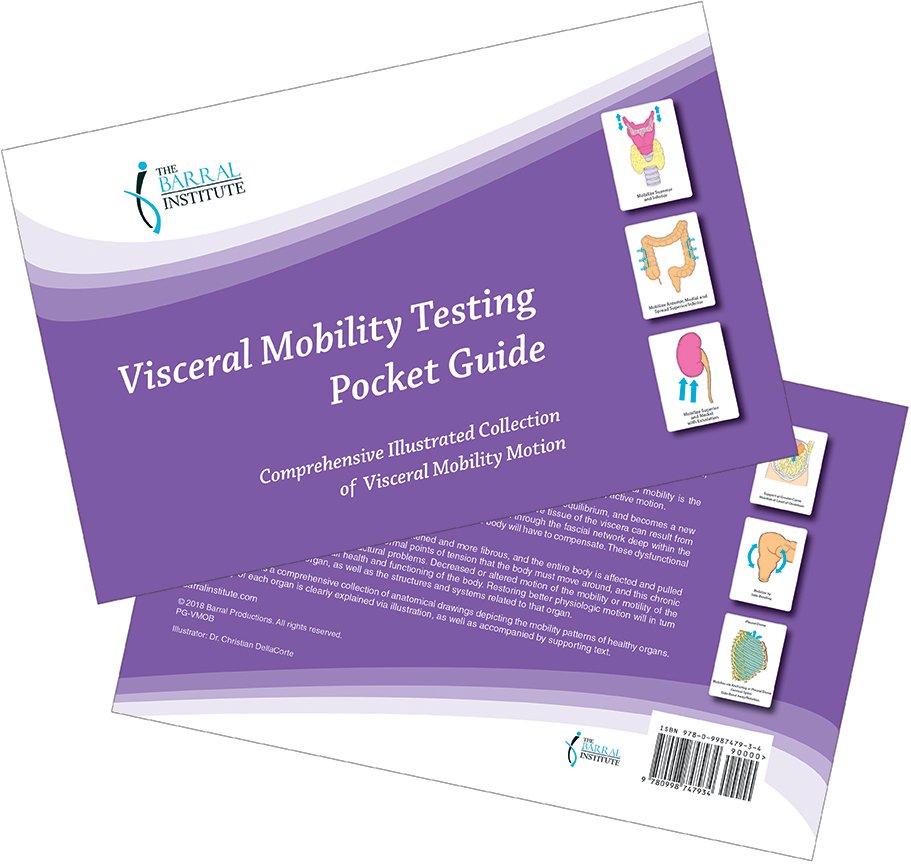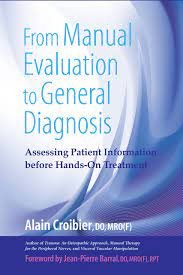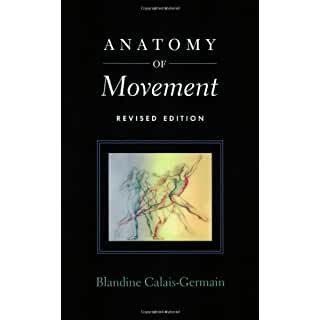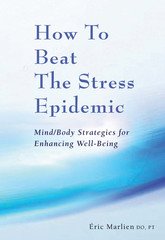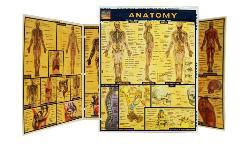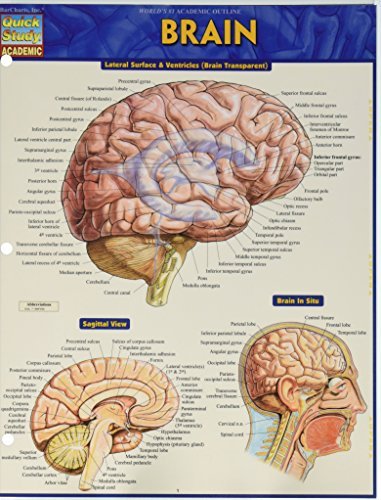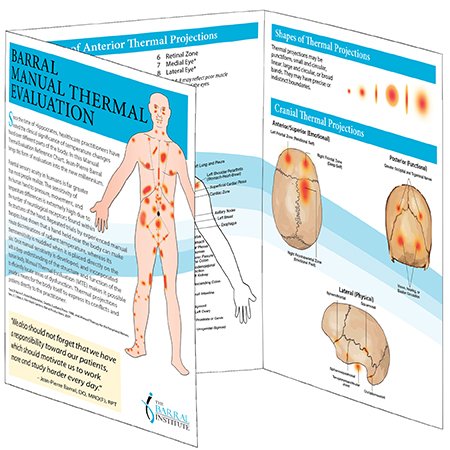-
Browse through the limited stock of our products that are currently sold at reduced prices here.
-
Once you complete a course you will automatically be enrolled on International Alliance of Healthcare Practitioners website. There is a Medallion Membership upgrade available which gives you access to videos and review materials for the classes you have attended and to allow you to build a webpage on the site. To purchase medallion membership please click here.
-
E-books are now available for some books. To view and purchase e-books please click here.
-
The following educational material is either recommended or required as preparation for our workshops. Send us an e-mail or phone to order and we will send it to you by post. We do not yet operate an online ordering system. Some of the material may not be available when you order since we do not keep large stock. When you attend workshops we usually offer this material during the workshop. Post and packing will be charged at cost.
£15
A Pathway to Health; How Visceral Manipulation Can Help You
Required reading for VM1.
Designed for the public to explain Visceral Manipulation in easy to understand terms.
Alison Harvey. 250 pages. Forward JP Barral
llustrated with nearly 100 photos & drawings, A Pathway to Health begins with general information about visceral manipulation, describing the method, goals, philosophy, and history of the practice.
The book is designed to guide a person toward a greater understanding of his/her own body, and therefore be better equipped to remain healthy and enjoy life. Each organ system is discussed, along with an overview of how Visceral Manipulation can facilitate health of the organ. Also included are case stories of real people and how Visceral Manipulation assisted them toward a healthier life.
£16
Understanding the Messages of your Body
Great for patients and required advanced reading for VM6
Jean-Pierre Barral. 240 pages.
We are all born with certain parts of our bodies that are less healthy than others, and as the stresses and traumas of life accumulate, these areas become what Jean-Pierre Barral calls our bodies' "weakest link." This is especially the case with our internal organs.
In this book, Barral discusses each organ and its complex relationship with the rest of the body, explaining how pain can originate with an emotional upset that creates distress in an organ, or how a physically damaged organ can cause emotional problems.
£19
Understanding the Messages of your Joints
Great for patients and reading for Manual Articular Classes
Jean - Pierre Barral DO. 214 pages.
This classic textbook, revised in 2006, explores the author's central premise of Visceral Manipulation. It's based on the relationship of structure and function among the body's internal organs, and how that relationship can affect and dictate overall health and well-being.
In this revised edition, all of the illustrations have been updated, photographs have been added, and the text revised to more closely follow Jean-Pierre Barral’s present approach to visceral manipulation. New techniques are introduced, and background information provided on such topics as the relationship of the different organs to the emotions.
£70
Visceral Manipulation (Revised Edition)
Required Advanced Reading for VM1 Seminar
Jean - Pierre Barral DO. 214 pages.
This classic textbook, revised in 2006, explores the author's central premise of Visceral Manipulation. It's based on the relationship of structure and function among the body's internal organs, and how that relationship can affect and dictate overall health and well-being.
In this revised edition, all of the illustrations have been updated, photographs have been added, and the text revised to more closely follow Jean-Pierre Barral’s present approach to visceral manipulation. New techniques are introduced, and background information provided on such topics as the relationship of the different organs to the emotions.
£70
Visceral Manipulation II (Revised Edition)
Required Advanced Reading for VM2
87 new colour illustrations & photographs. Jean-Pierre Barral DO. 216 Pages.
In this book, Jean-Pierre Barral further develops the concepts, techniques, and approaches first described in his pioneering work Visceral Manipulation. While that text focused on the fundamental anatomical and physiological background of this approach to treatment, along with the basic manipulative techniques, Visceral Manipulation II is centred around clinical signs, diagnostic methods, emotional connections, and more advanced techniques.
In this revised edition, all of the illustrations have been updated, photographs have been added, and the text revised to more closely follow Jean-Pierre Barral’s present approach to visceral manipulation. New techniques are introduced, and background information provided on such topics as the relationship of the different organs to the emotions.
£60
Urogenital Manipulation
Required Advanced Reading for VM3 and Women's Health classes.
Jean - Pierre Barral DO. 249 pages.
This book completes Jean-Pierre Barral's widely acclaimed four-volume exploration of the osteopathic implications of the dysfunctions of the internal viscera. The focus of this volume is on the pelvis, especially of women.
The Thorax
Required Advance Reading for VM4
Jean-Pierre Barral DO. 174 pages
This third volume in Jean-Pierre Barral's series about Visceral Manipulation explores the osteopathic implications of the thoracic cage and its contents. Barral gives a brief overview of the origins of the thoracic restrictions followed by detailed illustrations of the applied anatomy of the thorax, including the osteoarticular, muscular, fascial, visceral, vascular and nervous systems. In addition, the book provides pathologies of the thorax, manual diagnoses and manipulative techniques.
£60
£60
Manual Thermal Evaluation
Required Advance Reading for VM5
Jean-Pierre Barral DO. 128 pages
Manual Thermal Evaluation begins with a review of the scientific understanding of body heat, and the clinical significance of changes in surface temperature. The reader is then provided with the tools that are needed to transform one's hands into sensitive evaluative instruments. Each area of the body is surveyed, from the cranium, face and neck to the thorax, abdomen, pelvis and posterior visceral projections.
£65
Trauma; an Osteopathic Approach
Required Advanced Reading for NM1, NM2
Jean-Pierre Barral DO& Alain Croibier DO. 182 pages
This book offers a penetrating view of some of the common sequelae of trauma. It includes techniques to evaluate the dural tube, cranial sutures, craniofascial membranous junction, mediastinum and spleen. It concludes with a description of manual techniques to treat some of the more resistant conditions.
£80
Manual Therapy for the Peripheral Nerves
Recommended reading for VVM1
Jean Pierre Barral DO & Alain Croibier DO. 288 Pages
The new evaluation and therapy concept for the peripheral nerves by Jean-Pierre Barral and Alain Croibier is introduced for the first time in this book. Disorders of the plexus and nerves which cause dysfunctions are described in a practical and detailed way from anatomic, physiological and pathological points of view.
Examination and treatment techniques are described step by step and clarified with a multitude of photographs and illustrations. This book offers all osteopaths and other manual therapists the perfect guide to putting this new therapy concept into practice.
£85
Manual Therapy for the Cranial Nerves
Required Reading for NM4
Jean Pierre Barral DO & Alain Croibier DO. 320 Pages
Entirely new, original and abundantly illustrated, this book is an essential guide to the cranial nerves for manual therapists.
Incorporates new techniques that have an effect on the most precious part of the cranium, the brain.
Teaches you how to manipulate this delicate neural system safely.
Has over 100 full colour line illustrations showing the anatomy underlying the techniques, while accompanying full colour photographs demonstrate the techniques themselves.
Will make you aware of the brain as the primary target of your action as practitioner.
The central focus of the book is on the practical application of cranial nerve manipulation. Thanks to the wealth of illustrations it is also an excellent guide with which to visualize the cranial nerves and to understand their many functions.
£85
Visceral Vascular Manipulations
Required Reading for Viscerovascular classes
Jean Pierre Barral DO & Alain Croibier DO, 294 pages
This work demonstrates a novel approach to visceral osteopathy. Basing their ideas on anatomy and physiology, Jean-Pierre Barral and Alain Croibier propose manipulation of the arteries to treat the intestines and other internal organs by increasing their blood flow. The arteries, elastic and muscular in structure, and the innumerable nerve filaments which surround them, react ideally to manual treatment. To be effective, however, these manipulations must be specific and precise.
Thanks to the authors’ long experience as therapists, their mastery of osteopathic techniques and the aid of ultrasound technology, they have devised innovative techniques to improve the visceral vascular circulation. In this book the authors show the various sites of the principle pulses of the body and summarize the physiology of the circulation of the blood. The main organs and their physiology are addressed and include the heart, pancreas, small intestine, colon and other abdominal structures as well as the regions of the neck, skull and pelvic cavity.
Rich in detailed, high quality illustrations, this book serves as both an anatomical reference and a guide to carrying out visceral vascular manipulations in the most effective way possible.
New Manual Articular Approach; Lower Extremity
Text for New Manual Articular Lower Extremity Class
Jean Pierre Barral DO & Alain Croibier DO. 262 pages
Everything that can interfere with proper joint functioning is considered: the skin, fascia, aponeurosis, muscles, ligaments, capsule, synovium, serous bursa, fat, cartilage, labrum, bone, nerves and arteries.
In addition, Jean-Pierre Barral and Alain Croibier discuss the important influence the viscera, psycho-emotional relationships and even a person’s behavior can all have on joint play.
This comprehensive book offers innovative and original techniques for acute and chronic conditions of the lower limb. It is richly illustrated with drawings and photographs. The book presents novel techniques that are simple, precise, and not at all forceful.
£90
£85
New Manual Articular Approach; Upper Extremity
Text for New Manual Articular Upper Extremity Class
Jean Pierre Barral DO & Alain Croibier DO, 262 pages
New Manual Articular Approach; Upper Extremity is the first book in a three-part series. The forthcoming in the set are devoted to the lower extremity and the trunk. What is novel about the manual therapy approach presented here? The techniques are simple, precise and not at all forceful. Entirely new and original, they represent the fruit of many years of clinical experience.
Everything that can interfere with proper joint functioning is considered: the skin, fascia, aponeurosis, muscles, ligaments, capsule, synovium, serous bursa, fat, cartilage, labrum, bone, nerves and arteries.
In addition, Jean-Pierre Barral and Alain Croibier discuss the important influence the viscera, psycho-emotional relationships and even a person’s behavior can all have on joint play.
The upper extremity is an intricate musculoskeletal arrangement comprising 56 muscles and 126 ligaments!
Derived from the rich experience of its authors, this work presents a selection of effective techniques whose main objective to help the therapist bring relief to their patients. This book is for professional osteopaths, students of osteopathy, physiotherapists and manual therapists wishing to enrich their practice and broaden their skill set.
New Manual Articular Approach; Cervical Spine
Text for New Manual Articular Spine and Pelvis Class
Jean Pierre Barral DO & Alain Croibier DO, 252 pages
In the first part of this book, Jean-Pierre Barral and Alain Croibier explore the “hidden” imperatives that influence vertebral biomechanics. What else might constrain joint play differently from how it is described by the standard laws of vertebral behavior? With an innovative approach, they apply their systems model of the vertebral column to the complexities of the cervical spine. It is not enough to intervene on the inter-apophyseal level alone. A therapist must take neural, vascular, muscular, ligamentous, dural, and other systems into account.
In the second part of this book, the authors present original techniques to offer better relief to the multitude of patients who suffer from cervical pain. The techniques described are the fruit of many years of clinical experience. Precise and complete maneuvers address joints together with their periarticular structures.
£90
Advanced Visceral Manipulation; Neuroendocrine Approach to the Abdomen
Required reading for AVMHC
Jean-Pierre Barral, DO. 337 pages.
This book is different, yet complementary to the books series of Visceral Manipulation and Visceral Manipulation II. Advanced Visceral Manipulation presents a global approach to dysfunctions of the abdomen, with innovative considerations as to how practitioners can have an influence on the neuroendocrine system. The focus is on Visceral Manipulation techniques that work with the neuroendocrine system, together with their effects on the abdomen and implications for the lower extremities.
Each anatomical area (greater omentum, peritoneum, aorta, diaphragm, stomach, duodenum, pancreas, spleen, gallbladder, liver, small intestine, colon, kidneys, adrenal glands, and inguinal canal) is presented in the same manner: an introduction to anatomy, followed by vascularization, innervation, simplified embryology, and physiology. Osteoarticular relationships complete each chapter. More than one hundred original anatomical drawings and photos accompany detailed descriptions of the various tests and techniques.
£108
£99
Visceral Manipulation for Female Pelvic Disorders (2nd Edition)
Olivier Bazin, DO, Marc Naudin, DO and Jean-Pierre Barral, DO, 305 pages.
Manual Therapists and Osteopaths are challenged in their everyday practices to assess and treat patients affected by pelvic floor disorders. Recurring referral diagnoses may be related to functional disorders (urinary incontinence, pelvic pain, infertility), hormonal physiology (puberty, menstrual cycle, pregnancy, menopause), or related to consequences associated with specific surgical and/or infectious disease processes. The intrapelvic soft tissues are continuously stimulated and mobilized due to respiratory, urinary, genital, and intestinal functions; similarly, the urogenital organs are in constant motion. The role of the practitioner is to collectively restore pelvic soft tissue mobility to ensure proper pelvic physiology.
This book is based on the most common pelvic disorders encountered in clinical practice, and provides practitioners with key treatments to aid with patient care and recovery. The authors present a variety of internal and external pelvic manipulations, including comprehensive soft tissue, neural, and vascular techniques.
The emotional component, the social impact, the therapist’s role, indications and contraindications, as well as specific urogenital pathologies are explicitly presented.
This book is meant to be instructional: technique descriptions are reinforced with diagrams and pictures illustrating the manipulations. Rich in detailed, high quality illustrations and photographs, this book serves as both an anatomical reference and a guide to carrying out visceral manipulations for female pelvic disorders in the most effective way possible.
The Second Edition includes numerous additions and updates. There are several additional pages that have been added with new details and illustrations throughout, including the latest research on biomechanics, endometriosis, and pelvic neuralgia. The pelvic floor now has a chapter unto itself, and there is a whole new chapter on pregnancy with valuable new techniques. In addition to the global release of the uterus, other treatments include techniques for round ligament syndrome, the osteoarticular system, the muscular system, the digestive system, the vascular system, and the autonomic nervous system with the clear images that we have come to appreciate.
£95
Pediatric Manual Therapy: Visceral and Neuromeningeal Manipulation Volume 1
Jean Anne Zollars, PT, DPT, MA, BI-D.
A two-part series that adapts the profound manual therapies developed by French osteopath Jean-Pierre Barral for newborns, babies, and young children. These books provide a comprehensive guide for manual therapists aiming to enhance their care of pediatric patients.
This volume guides the manual therapist through a step-by-step approach to assessing and treating the autonomic nervous system and neuromeningeal system in pediatric patients. It includes case studies that integrate Visceral and Neuromeningeal Manipulation with pediatric therapy.
It includes:
Treating common pediatric conditions
Autonomic nervous system dysregulation
Specific pediatric considerations
Embryology and neuromotor development
Tissue-guided treatment
£90
New Approach to the Vagus Nerve and Autonomic Nervous System
Required reading for VNANS
Eric Marlien, PT, DO, 232 pages.
This book for health care practitioners presents the functional importance of the autonomic nervous system (ANS) in the physiological, behavioral, and psychological balance in humans. It clearly introduces Stephen W. Porges’ polyvagal theory and presents applications to human health.
Older and dualistic concepts of the sympathetic and parasympathetic nervous systems hold that they operate in complementary and opposing ways; here, the reader will discover a new system with three hierarchical levels arranged according to their functions for adaptation, survival, and homeostasis. The polyvagal theory also serves as a central pillar around which a new explanation of human development is proposed, regrouping physiological, psychological, and spiritual dimensions, and shedding new light on psychosomatic phenomena.
Although this book was written by an osteopath, it will benefit all therapists of the body, mind, and spirit who search to deepen their comprehension of human functioning. It includes detailed description of evaluation and hands on treatment approaches that can be used to treat and balance the autonomic nervous system, along with self-help approaches for the patient.
£110
Manual Therapy Approach to the Brain; Volume 1
Required reading for AVMTB1
Jean-Pierre Barral, PT, DO, 336 pages.
This book presents an innovative manual approach to working with people who have challenges related to their brain, the most complex and fascinating part of the body, and a territory that seems essentially inaccessible. It is the result of a rich clinical experience, and a long empirical and pragmatic journey that Jean-Pierre Barral began over four decades ago while working with many patients with head injuries, strokes, brain diseases, and psychomotor disabilities.
The objective of this manual approach is to help improve the functioning of the different circuits of the brain by addressing the circulatory, fluidic, meningeal, neural, and electromagnetic systems that are brought into play during daily activities. It is thus possible, by precise manual therapy techniques, explained in detail in this book, to come to the aid of patients who have been afflicted with such ailments as brain damage, trauma or stroke, as well as aiding those with neurodegenerative diseases, depression, and without forgetting those patients with both motor and sensory dysfunctions.
The author presents his original techniques based on four main approaches:
1. The structural approach brings together techniques relating to the vascular, nervous, meningeal, ocular, barometric systems, and the circulation of cerebrospinal fluid.
2. The functional approach brings together the study and treatment of dysfunctions affecting the senses and functions (speech, hearing, balance, touch, motor skills, consciousness, taste, smell, sight, fear, pain, memory, etc.)
3. The emotional approach focusses on a person’s processes of adaptation and compensation.
4. The neuroendocrine approach.
£25
Manual Therapy for the Prostate
Jean Pierre Barral DO. 112 Pages
Sooner or later, nearly all men have prostate problems. The urinary, genital and psycho-emotional consequences are inconducive to a good quality of life.
Thanks to these simple, effective and non-iatrogenic techniques, precise manual therapy can help to resolve the effects of prostate problems.
This book is the fruit of everyday clinical experience. Based on anatomy and physiology, Manual Therapy for the Prostate provides a simple response to a complex pathology. This book is one of the keys to bringing them some relief.
£95
Physiological & Clinical Applications of Visceral Manipulation; Volume 1: Abdomen; Evaluation, Listening Techniques, Liver, Gallbladder & Stomach
Ron Mariotti, 269 pages
This book combines detailed anatomy, physiology, causes and characteristics for disease, specific signs and symptoms for each organ, visceral evaluation procedures, specific details to all techniques as taught within the Barral visceral curriculum --- as well as, homeopathic, botanical, nutritional and physical medicine suggestions. The focus is on these areas of the abdomen - evaluation, listening techniques, liver, gallbladder and stomach.
£99
Physiological & Clinical Applications of Visceral Manipulation; Volume 2: Abdomen; Duodenum, Small Intestines, Colon, Sphincters and Additional Supportive Techniques
Ron Mariotti
In Volume 2 of the Physiological and Clinical Application series, Dr. Mariotti continues his detailed exploration into the clinically relevant world of anatomy and physiology, with a focus on the duodenum, jejunoileum, and colon. Not only does he take you methodically through the study of anatomy, but also step-by-step through the assessment and treatment techniques of Barral’s Visceral Manipulation.
Optimal health and function of the duodenum, jejunoileum, and colon are essential for the overall health of the human organism. The duodenum not only absorbs micro-nutrients, but also creates numerous secretions that help optimize abdominal pressures and protects the delicate jejunoileum from potential pathogens entering through our foods. The jejunum portion of the jejunoileum is the site of a significant proportion of the gut’s nutrient absorption, as well as the main source of many neurotransmitters and hormones. The colon functions as a key interface in the symbiotic relationship we share with our microbiome.
£42
Visceral Connective Tissue Support System Pocket Book
Jean Pierre Barral DO, 62 pages
"This Pocket Book emphasizes specific details to give a clear understanding of the organ attachments and the potential for functional change (structural integrity, support, absorption of pressure, and protection). The material presented here will help you identify the local fixation, how to connect with it, and how it may affect another section of the body. I encourage each of you to add this unique approach to visceral anatomy to your continual quest for anatomical knowledge and understanding." ~ Gail Wetzler, Director of Curriculum, Barral Institute
• This Pocket Book is a 'must have' for the Visceral Manipulation Therapist.
• Enhance your anatomical knowledge and understanding, and enhance your skill level.
• Spiral binding at the top of the Pocket Book makes it easy to view the text and related illustration on the facing page.
• Great tool to explain Visceral Manipulation to your clients.
• 21.5 cm long x 14cm tall (fits in a large pocket!!)
£42
Visceral Manipulation Mobility Testing Pocket Guide
48 Pages
This Pocket Guide is a 'must have' for the Visceral Manipulation Therapist. It is a comprehensive collection of anatomical drawings depicting the mobility patterns of healthy organs.
The mobility of each organ is clearly explained via illustration, as well as accompanied by supporting text. It will enhance your anatomical knowledge and understanding, and enhance your skill level. Spiral binding at the side of the Pocket Guide makes it easy to view the text and related illustration on the facing page.
This Pocket Guide is a great tool to explain Visceral Manipulation to your clients.
8.5" long x 5.5" tall (fits in a large pocket!!)
£42
Visceral Manipulation Motility Testing Pocket Guide
46 pages
This Pocket Guide is a 'must have' for the Visceral Manipulation Therapist. It is a comprehensive collection of anatomical drawings depicting the motility patterns of healthy organs.
The motility of each organ is clearly explained via illustration, as well as accompanied by supporting text. It will enhance your anatomical knowledge and understanding, and enhance your skill level. Spiral binding at the side of the Pocket Guide makes it easy to view the text and related illustration on the facing page.
This Pocket Guide is a great tool to explain Visceral Manipulation to your clients.
8.5" long x 5.5" tall (fits in a large pocket!!)
£42
From Manual Evaluation to General Diagnosis
Alain Croibier DO, 384 Pages
From Manual Evaluation to General Diagnosis presents a comprehensive guide to osteopathic evaluation and diagnosis before hands-on treatment. Based on Croibier's everyday clinical experience, the book provides an extensive educational framework for the examination of patients in order to determine what the course of treatment should be. As Croibier explains, "an accurate diagnosis is the surest way to devise a truly individualized treatment plan and thereby achieve the best possible results."
Written for manual hands-on therapy students and practitioners, the book provides an in-depth exploration of the osteopathic diagnosis process which aims to identify an abnormality and to discover factors which may be causing the dysfunction. Drawing a comparison between diagnosis in classical medicine and osteopathy, Croibier explains that the osteopath focuses on restoring the conditions of good health rather than simply addressing the consequences of disease.
Enhanced with full-colour instructional photos and illustrations, the book describes the manual hands-on assessments and general evaluations that lead to a diagnosis. Manual assessments include objective observation, diagnostic touch--palpation of the affected areas of the body, visualization, and "listening" (a hand placed on a specific part of the body to gather information about tissue functionality). The manual therapist also performs a patient intake and interview; general evaluation that analyzes the patient's symptoms and general state; examination of posture and equilibrium; and observation of individual characteristics, such as constitution, temperament, and body type.
£25
The Croissant Inside the Brain
Peter Schwind, Dr Phil, MA. 208 Pages
For a quarter of a century, Peter Schwind has closely followed the workings of the legendary osteopath, Jean-Pierre Barral as a student, as an assistant teacher to therapists, and also as a conversation partner and friend. Now Peter Schwind—author of the of the successful book—Fascial and Membrane Technique—presents an exciting story which includes case studies by Barral that seem almost too incredible. He takes the reader on a journey to the hidden bridges, which are present in the intermediate world of the body and soul. He tells about the exciting paths that Barral has taken to answer the question of whether healing with hands is at all possible. Could our muscles, fascia, and bones, as well as our organs and nerves, be brought to life again via touch? And is it even possible—as in the story of the croissant inside the brain presented in this book—to touch the brain through the cranium sosensitively that it finds a new life? A new life made possible by that which experts call the neuroplasticity of the brain?
We invite you to explore these questions with Jean-Pierre Barral and the author hands-on assessments and general evaluations that lead to a diagnosis. Manual assessments include objective observation, diagnostic touch--palpation of the affected areas of the body, visualization, and "listening" (a hand placed on a specific part of the body to gather information about tissue functionality). The manual therapist also performs a patient intake and interview; general evaluation that analyzes the patient's symptoms and general state; examination of posture and equilibrium; and observation of individual characteristics, such as constitution, temperament, and body type.
£30
Anatomy of Movement
Blandine Calais-Germain, 312 Pages
Anatomy of Movement presents a dynamic, integrated approach to the study of the physical structures of the musculoskeletal system and their functional relationship to the movements of the human body. In clear and concise text illustrated with more than a thousand graphic drawings, the author guides the reader on a lively tour of the muscles, bones, ligaments and joints of the arms, legs and trunk. The focus throughout the book is on anatomy not for its own sake, but in its functional relationship to the actual movements of the body in dance, exercise, and other physical disciplines. In this newly-revised edition, a majority of the thousand-plus illustrations are new or have been modified by the author from the original edition. The text has also been updated, and the sequencing of the presentation of the musculoskeletal anatomy has been revised in part.
£21
How to Beat the Stress Epidemic: Mind/Body Strategies for Enhancing Well-Being
Éric Marlien DO, PT, 128 pages
After a clear and concise theoretical description of stress and its consequences for health, the author presents cardiac coherence, a state of physiological well-being that is gaining popularity in France today. He lays out a collection of exercises and practices that lead the reader step by step towards physiological, emotional, and psychological balance. When these three personality components are carefully and thoughtfully brought into harmony, they create the foundation for a healthy and constructive life.
For whom is this book written? For anyone who, in one way or another, feels their life is a succession of difficulties. These could be due to external stress linked to the ups and downs of daily life, which have intensified in modern times. Or they could be due to internal, psychological stress connected to their personal narratives, whose traces continue to torment in some way.
£85
New Manual Articular Approach: The Shoulder DVD
Jean Pierre Barral DO, 90 minutes
This DVD about the treatment of the shoulder introduces a new modality of working with joints developed by Jean-Pierre Barral, DO in cooperation with Alain Croibier, DO. More than 40 years of clinical practice have led to this innovative approach, which includes all the different components of a joint:
• muscles
• ligaments
• capsule & labrum
• synovial fluid inside the capsule
• arteries & veins
• nerves
This breakthrough approach uses the presence of mechanoreceptors to work with the connection between the joint and the brain. As Jean-Pierre Barral states in his introduction to this DVD, “Speak to the brain through the joints.”
This 90-minute DVD includes anatomy, physiology, theory and treatment in a very clear and concise manner to make it user friendly for all manual therapists. The anatomy for each technique is cross-referenced with pages from Thieme and Netter anatomy books for ease of learning.
This professionally produced HD-DVD is the first of a series, documenting the "New Manual Articular Approach" in excellent quality. The techniques were filmed with two cameras to show exact hand placement and movements.
£60
New Manual Articular Approach: The Elbow, Wrist and Hand DVD
Jean Pierre Barral DO, 70 minutes
It is not only the dysfunctional tension around the joint, that we have to find and treat, it is also the pressure inside the joint capsule, that we have to observe. Barral is aiming for a process of restoring the negative pressure inside the capsule, to distribute the synovial fluid evenly and thereby „save“ the cartilage. This is based on the observation, that the pressure difference between the inside of the joint capsule and its surrounding tissues ismaintained or – in case of dysfunction – disturbed by strain, present in all sort of tissues. Strain can be found not only within muscles and their fascia, strain is present in membranes, ligaments, the capsule itself and even in certain layers of fat tissues. In this DVD Barral shows, how to make the choice for efficient treatment for elbow and wrist problems, by distinguishing amongst the large variety of anatomical units and tissues involved.
For treating epicondylitis at the elbow, the DVD shows a clear distinction between the „tennis elbow“ and the „golf elbow”. Both dysfunctions require a distinct treatment strategy, because both can be related to different nerves, involved in the irritation of the elbow.
£60
New Manual Articular Approach - The Hip DVD
Jean-Pierre Barral, 62 minutes
This DVD focuses on the new approach to the treatment of the hip joint that Jean-Pierre Barral and Alain Croibier have developed over the last years. Every single technique is introduced with the help of anatomical drawings that Barral himself created especially for this purpose. They allow us to gain an exceptional insight into the anatomical relationships that are of importance during the distinct steps of each treatment.
There are 4 chapters in this DVD:
The first chapter is dedicated to the abductor muscles, active stabilisers of the hip joint. Also, essential parts of the fasciae, like the fascia lata, are given attention here.
The second chapter addresses those active stabilisers that serve rotation and adduction. Barral dedicates in this chapter special attention to the piriformis muscle and the sacral plexus.
The third chapter concerns active as well as passive hip stabilisers. Additionally, in the theoretical as well as the practical part of this chapter the relevant ligamentous structures are addressed.
In the fourth chapter Barral guides us through a number of innovative techniques that are relevant to the treatment of nerves and vessels.
All parts of this DVD have been video recorded in HD quality by a professional camera team. During shooting and cutting this one aspect was of paramount importance: the quality and the sequence of the images should facilitate mastering the different techniques shown.
£60
New Manual Articular Approach - The Knee: A "Neurological Joint" DVD
Jean-Pierre Barral, 65 minutes
In this DVD Jean-Pierre Barral demonstrates his new techniques for the treatment of the knee. The underlying concept has been developed over the last years in collaboration with Alain Croibier.
Barral calls the knee a "neurological joint". He alludes here to the complex relationships that exist between the knee and the nervous system. The example of the knee demonstrates very clearly how the different building blocks of the organism are neurologically wired to the "executive floor“, i.e. the brain.
The application is from prevention of sports injuries to the treatment of chronic and acute dysfunctions. The manifold problems around the theme meniscus get special attention.
In four chapters Barral succeeds in giving a practical, anatomy-based introduction into the various facets of this particularly problematic joint, the knee.
The first chapter looks at its active and passive stabilizers. The practical treatment demonstrations circle around the interaction between muscles and ligaments.
The second chapter is dedicated to active and passive stabilizers. From the combination of techniques demonstrated in the first and second chapters emerges a three dimensional way of entrance to the knee joint.
The third chapter regards specifically the ligaments that play a role for the menisci.
In the three parts of the fourth chapter Barral demonstrates the treatment of the neurovascular system: innovative techniques are shown here to treat the nerves, arteries and veins which are the backdrop of important knee dysfunctions.
£75
Set of 3 Neuroendocrine DVDs, £170
(save £25)
Visceral Manipulation – Neuroendocrine Effects
STOMACH AND RESPIRATORY DIAPHRAGM DVD
Jean-Pierre Barral, 60 minutes
This DVD introduces new ways of how to work with organs so that these interventions also affect the neuroendocrine regulation of the digestive system.
Barral introduces each technique with anatomical drawings. The anatomical introductions and conceptual explanations are followed by a practical demonstration of each treatment. This innovative approach is presented in theory and practice. The three DVDs describe the neuroendocrine effects of Visceral Manipulation in relation to the following organs and related anatomical structures:
•· the peritoneum and the greater omentum
•· the diaphragm
•· the stomach
•· the inguinal ligament and canal
•· neuroendocrine effects
£60
Set of 3 Neuroendocrine DVDs, £170
(save £25)
Visceral Manipulation – Neuroendocrine Effects
LIVER, PANCREAS AND INTESTINE DVD
Jean-Pierre Barral, 55 minutes
This DVD introduces new ways of how to work with organs so that these interventions also affect the neuroendocrine regulation of the digestive system.
Barral introduces each technique with anatomical drawings. The anatomical introductions and conceptual explanations are followed by a practical demonstration of each treatment. This innovative approach is presented in theory and practice. The three DVDs describe the neuroendocrine effects of Visceral Manipulation in relation to the following organs and related anatomical structures:
•· duodenum
•· the diaphragm
•· the liver, gallbladder and pancreas
•· the small intestine
•· summary of neuroendocrine effects
£60
Set of 3 Neuroendocrine DVDs, £170
(save £25)
Visceral Manipulation – Neuroendocrine Effects
COLON, HEART AND KIDNEYS; RELATIONSHIP WITH THE VAGUS NERVE
Jean-Pierre Barral, 49 minutes
More than 40 years ago Jean-Pierre Barral started a new modality of manual therapy, called VISCERAL MANIPULATION. Barral has published several VISCERAL, NEURAL and VASCULAR MANIPULATION books and now expands on these concepts and original techniques. This DVD introduces new ways of how to work with organs so that these interventions also affect the neuroendocrine regulation of the digestive system.
Barral introduces each technique with anatomical drawings. The anatomical introductions and conceptual explanations are followed by a practical demonstration of each treatment. This innovative approach is presented in theory and practice. The three DVDs describe the neuroendocrine effects of Visceral Manipulation in relation to the following organs and related anatomical structures:
•· the heart
•· the colon
•· the osteopathic approach to high blood pressure via manual treatment of the vagus nerve
£29
Reduced from £39
Muscle Attitudes DVD
J.C. Guimberteau, MD, 25 Minutes
In this film, J.C. Guimberteau, a surgeon and scientist, and J.P. Delage, a scientist,
show that the muscle is a contractile structure fully inserted into the network of the multi-fibrillar system already described as being beneath and within the skin, and not separate from it. From the anatomical point of view, they believe that there is no break in continuity, and that all tissue sheaths around or in the muscle - epimysium, perimysium or endomysium - are in fact, one unique framing tissue in continuity with sliding tissues within which the organs are embedded. In actuality the muscular cells are set inside this microfibrillar, dispersed-patterned architecture.
£29
Reduced from £39
Skin Excursion DVD
J.C. Guimberteau, MD, 25 Minutes
The Skin Excursion extends Dr. J.C. Guimberteau's exploration of living fascia to the skin and the layers immediately beneath the skin. The skin, the boundary of this optimally efficient world, has not really been studied in its
morphodynamic aspect and in its continuity with the rest of the body. The aim of this film is to show the existence of mobility and mechanism, and the architectural organization of the epidermis, dermis and hypoderm in complete
continuity with the inner architecture.
£8
Anatomy Quick Study Chart
The most comprehensive all-in-one anatomy chart, including skeletal, circulatory, nervous, muscular, reproductive, lymphatic, respiratory, and senses. It contains 800+ anatomical identifications covering all major systems. Use it to your advantage in class, during homework, and as a memory refresher while preparing for exams. This powerful study tool can be quickly and repeatedly referred to during and well beyond your college years. (8 1/2" x 11" Laminated).
£8
The Brain Quick Study Mini-Chart (Tri-Fold)
Loaded with meticulously detailed, beautifully illustrated structures of the human brain and surrounding systems, clearly and concisely labeled for easy identification. Illustrations by award-winning and best-selling medical illustrator Vincent Perez, whose life mission is cataloging the beauty and detail of our complicated body systems for the medical professional, the formative student and the inquisitive layperson.
£30
Manual Thermal Evaluation Trifold Reference Chart
Recommended for VM5
Manual Thermal Evaluation (MTE) an evaluation method developed by Jean-Pierre Barral, DO, MRO(F) that utilises sensitivity to temperature changes to identify dysfunction within the body. It is useful across a wide spectrum of health disciplines and augments other forms of evaluation. This MTE wall chart assists the therapist in maximizing their understanding and use of MTE.
An excellent client education tool to explain the scientific understanding of body heat, and the clinical significance of changes in surface temperature for finding restrictions and organ dysfunction in the body.
Excellent tool for Therapists to help develop their practice.(8 1/2" x 11" Laminated).
£30
Understanding Your Organs Trifold Reference Chart
This full-colour trifold chart highlights a complete spectrum of information about the internal organs as only Jean-Pierre Barral can, including the physical, nutritional and physiological care of each one.(8 1/2" x 11" Laminated)
£30
Cranial Nerve Trifold Reference Chart
Alain Croibier, Jean-Pierre Barral, 8.5”x11” when trifolded, laminated.
This beautiful 6-page trifold reference chart, designed by Jean-Pierre Barral, D.O., Alain Croibier, D.O. and Barral Productions, allows you to see the cranial nerves in vivid detail. There are full-color illustrations highlighting the nerves, their exit points through the cranium and vertebrae, as well as some of the key muscles they perforate. There is a detailed illustration and description of the autonomic components of the cranial nerves as a whole. Also included are principal clinical signs and symptoms of the cranial nerves, as well as principal topographical syndromes of cranial nerve problems at the cranial base. Great for practitioners and patient information.
£30
Understanding the Peripheral Nervous System Trifold Reference Chart
Alain Croibier, Jean-Pierre Barral, 8.5x11 when trifolded, laminated.
This useful 6-page trifold reference chart illustrates and describes:
Components of the peripheral nerve
Nerve supply & common warning signs arising from dysfunction at each spinal segment
Pathophysiological consequences of nerve compression
Central nervous system versus peripheral nervous system
This chart goes hand-in-hand with Jean-Pierre Barral and Alain Croibier's Book, Manual Therapy for the Peripheral Nerves.
Excellent for your personal health and education, as well as client education.
£30
Discover Integrative Approach to Concussion Trifold Chart
This helpful trifold reference chart, written in laymen's terms, explains the value of integrative manual therapies for helping people with traumatic brain injuries.
Post-Concussion Syndrome and associated symptoms have been shown to clinically respond to CranioSacral Therapy (CST), Neural Manipulation (NM) and Visceral Manipulation (VM). These manual therapies continue to generate interest and scientific investigation as a viable adjunct in the care of individuals experiencing the adverse effects of post-concussion syndrome and traumatic brain injuries. These manual therapies affect the body deeply and assist the healing forces already at work. When the body is no longer bound by restriction along the fascial system it can move with greater ease, readily adapt to its environment, and thus have a greater expression of health.
This reference chart is an effective way to boost your business through consumer education and care. Excellent tool for Therapists to help develop their practice and share with their clients.
Great item to have several copies in your reception area!
